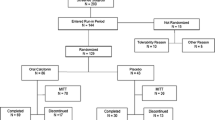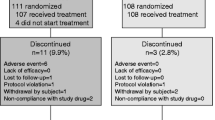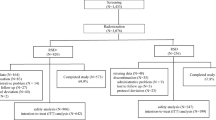Abstract.
Calcitriol has been widely used in the management of osteoporosis, but its efficiency is a matter of controversy. It is not known whether combinations of calcitriol and antiresorptive agents such as etidronate and calcitonin are superior to calcitriol alone in the treatment of postmenopausal osteoporosis. To make this determination, 30 Turkish women with postmenopausal osteoporosis between 45 and 68 years of age were randomized to receive either intermittent cyclical etidronate (400 mg/day, for 14 days) followed by 60 days of cyclical calcitriol therapy 0.25 μg twice daily (group 1; n= 10), or calcitriol 0.25 μg twice daily (group 2; n= 10), or calcitriol 0.25 μg/day in combination with 100 IU intranasal salmon calcitonin taken every other day (group 3; n= 10) through a 1-year period. Bone mineral density (BMD) of lumbar spine (L2 to L4) was determined for each patient by dual-photon absorptiometry (153Gd) at baseline, after 6 months, and at the end of the study. There was no significant difference among groups with respect to mean spinal BMD at baseline, after 6, and after 12 months. No significant spinal BMD changes occurred in any group from baseline, after 6 months, and after 12 months. Four patients in groups 1 and 2 and five patients in group 3 developed hypercalcemia at least once during therapy. Hypercalciuria occurred at least once in 9, 10, and 7 patients in groups 1, 2, and 3, respectively. One patient in group 2 developed a renal stone at the end of the study. Mean urine hydroxyproline levels did not change significantly in any group with respect to baseline. The data suggest that one-year treatment with calcitriol, given either alone or in combination with antiresorptive agents, does not improve spinal BMD in Turkish women with postmenopausal osteoporosis, and is associated with a high rate of adverse events.
Similar content being viewed by others
Author information
Authors and Affiliations
Additional information
Received: 4 October 1996 / Accepted: 31 December 1996
Rights and permissions
About this article
Cite this article
Gürlek, A., Bayraktar, M. & Gedik, O. Comparison of Calcitriol Treatment with Etidronate–Calcitriol and Calcitonin–Calcitriol Combinations in Turkish Women with Postmenopausal Osteoporosis: A Prospective Study. Calcif Tissue Int 61, 39–43 (1997). https://doi.org/10.1007/s002239900291
Published:
Issue Date:
DOI: https://doi.org/10.1007/s002239900291




